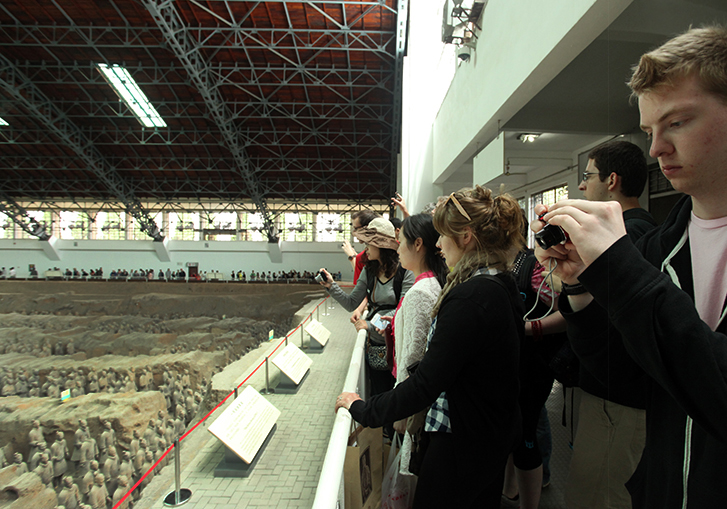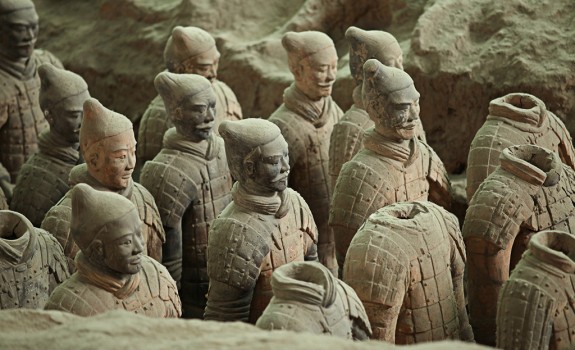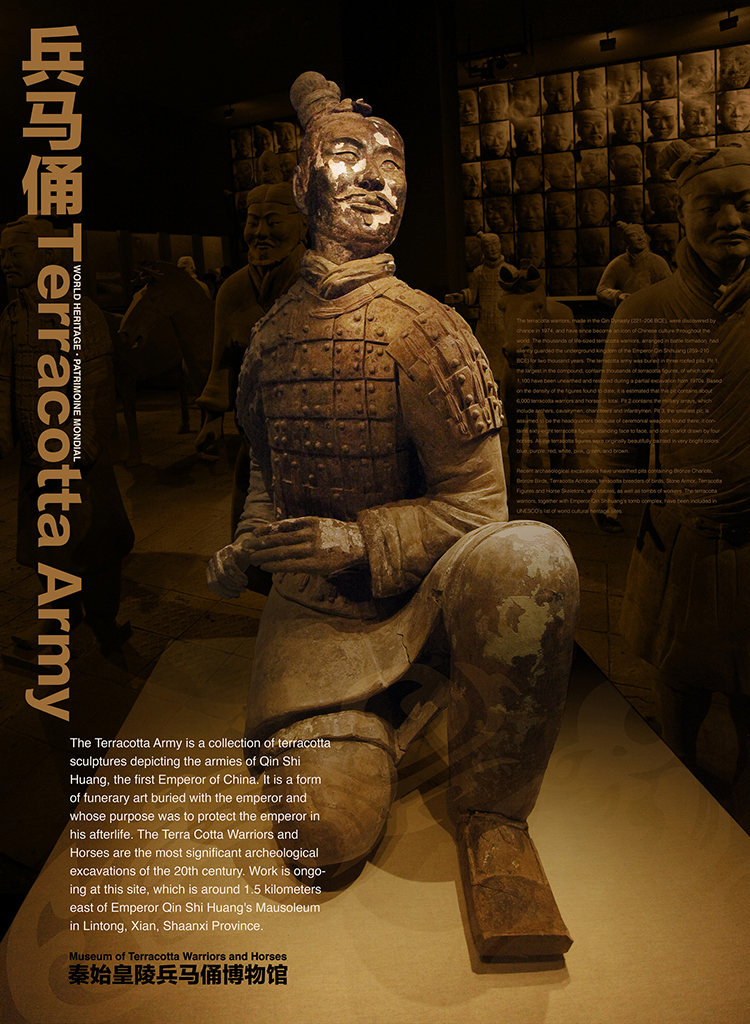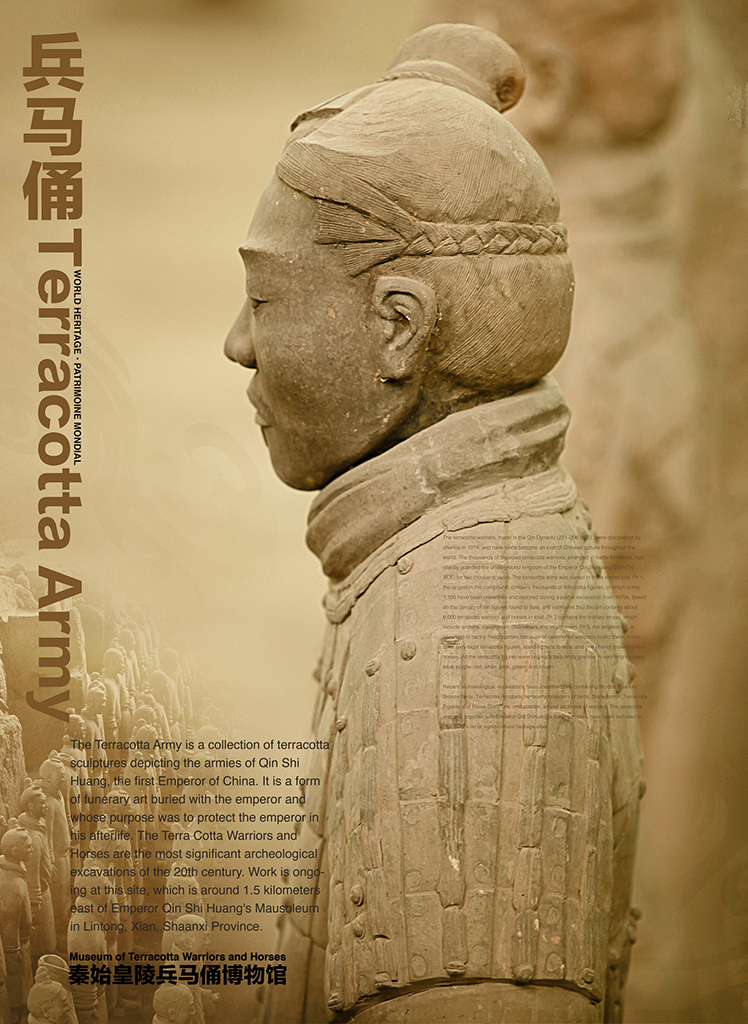Photo Credit: Ping Xu
 Truman’s Study Abroad team (faculty and students) visited the pit-1 of Museum of Qin Terracotta Warriors and Horses on May 29, 2013.
Truman’s Study Abroad team (faculty and students) visited the pit-1 of Museum of Qin Terracotta Warriors and Horses on May 29, 2013.
The Terracotta Warriors made in the Qin Dynasty (221–206 BC), were discovered by chance in 1974, and have since become an icon of Chinese culture throughout the world. The thousands of life-sized terracotta warriors, arranged in battle formation, had silently guarded the underground kingdom of the Emperor Qin Shihuang (259–210 BC) for two thousand years. The terracotta army was buried in three roofed pits. Pit 1, the largest in the compound, contains thousands of terracotta figures, of which some 1,100 have been unearthed and restored during a partial excavation from 1970s. Based on the density of the figures found to date, it is estimated that this pit contains about 6,000 terracotta warriors and horses in total. Pit 2 contains the military arrays, which include archers, cavalrymen, charioteers and infantrymen. Pit 3, the smallest pit, is assumed to be the headquarters because of ceremonial weapons found there; it contains sixty-eight terracotta figures, standing face to face, and one chariot drawn by four horses. All the terracotta figures were originally beautifully painted in very bright colors: blue, purple, red, white, pink, green, and brown.
The Terracotta Army is a collection of terracotta sculptures depicting the armies of Qin Shi Huang, the first Emperor of China. It is a form of funerary art buried with the emperor and whose purpose was to protect the emperor in his afterlife. The Terra Cotta Warriors and Horses are the most significant archaeological excavations of the 20th century. Work is ongoing at this site, which is around 1.5 kilometers east of Emperor Qin Shi Huang’s Mausoleum in Lintong, Xian, Shaanxi Province.
Recent archaeological excavations have unearthed pits containing Bronze Chariots, Bronze Birds, Terracotta Acrobats, terracotta breeders of birds, Stone Armor, Terracotta Figures and Horse Skeletons, and stables, as well as tombs of workers. Chinese archaeologists are also using remote-sensing technology to probe the tomb mound. The technique recently revealed an underground chamber with four stairlike walls. Experimental pits dug around the tomb have revealed dancers, musicians, and acrobats full of life and caught in mid-performance, a sharp contrast to the military poses of the famous terra-cotta soldiers. Qin Shihuang’s tomb was filled with models of palaces, and pavilions as well as fine vessels, precious stones and rarities. The tomb itself remains unexcavated because the further excavations of the tomb itself are on hold, at least for now. “It is best to keep the ancient tomb untouched, because of the complex conditions inside,” Duan Qinbao, a researcher with the Shaanxi Provincial Archaeology Institute, told the China Daily in 2006.
The Terracotta Warriors, known as the eighth wonder of the world, together with Emperor Qin Shihuang’s Tomb Complex, have been included in UNESCO’s list of world cultural heritage sites in 1987.















